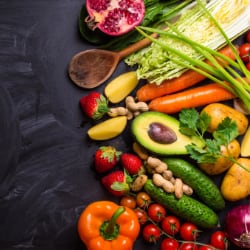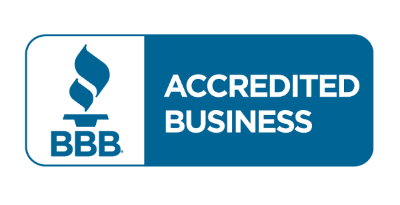
Whole Foods Plant-Based (WFPB) Diet
Nutrition
How many times have you jumped on-board the diet train with high hopes of weight loss and improved health, only to discover limited food choices, difficulty staying on-track, and few measurable health benefits? Diet fads come and go, but one - the whole foods, plant-based diet (WFPB)- isn't a fad.

Whole Foods Plant-Based (WFPB) Diet
Nutrition
How many times have you jumped on-board the diet train with high hopes of weight loss and improved health, only to discover limited food choices, difficulty staying on-track, and few measurable health benefits? Diet fads come and go, but one - the whole foods, plant-based diet (WFPB)- isn't a fad.
It's not only based on common-sense food choices but also sustainable and good for the body and the mind.
If you've not yet explored the WFPB lifestyle, you'll want to read this post from beginning to end! We've shared the basics, including the best foods to choose from and even a few tips on creating meal plans.
In a Nutshell
A whole food, plant-based diet is, at its core is so uncomplicated you could break it down into two principles based solely on its name. Whole-foods and plants.
Whole Food
When you think about what counts as a whole food, look for foods in their natural state. Also, choose minimally processed foods and those that contain limited (or none) refined ingredients.
Plant-Based
People who follow WFPB diets don't eat any foods containing animal ingredients. That includes meat, eggs, milk, or honey.
Choosing a whole-food, plant-based diet allows you to meet your nutritional needs by choosing foods in their natural state. You'll also want to focus on minimally-processed foods.
In a minute, we'll talk more about what you can eat on a WFPB diet, but first, take a look at the current state of affairs for the American diet.
The Sad State of the American Diet
Before we explore the statistics, you're likely curious about the heading for this section. Maybe you're asking yourself, "what is the American diet, and why is it sad"?
S.A.D. is the acronym for the standard American diet.
The source of 63% of the calories consumed by Americans is processed and refined foods. Processing doesn't disqualify a food from an acceptable status on the list of healthy foods. It's all about the level of processing.
On most grocery store shelves, you'll find foods ranging from minimally to heavily processed. Minimal processing includes prepping foods for convenience. Think bagged lettuce, chopped vegetables, and shelled and roasted nuts.
Most frozen dinners, microwaveable dinners, and some ready-to-eat foods such as chips and crackers are heavily processed. Your favorite carbonated beverage is one of those food items on the heavily processed list for all the soda lovers out there.
Minimally processed foods have a place in the American diet. Sadly, only 12% of our calories come from minimally processed and plant-based foods. The most sobering fact is that only 6% of our calories come from plant-based foods: the other half comes from French fries!
How sad is that? Sure, potatoes in their natural state, baked or steamed lightly, are a healthy vegetable choice. French fries, cooked in oil, do not qualify as healthy food. Their status on the health and wellness charts is low.
Americans Remain Blissfully Unaware
Until they experience a diet-related health condition, most people assume they follow a relatively healthy diet. Even those who dine on fast-food all the time don't always realize the harm they're doing to their bodies and minds.
Most of us realize unhealthy diets can lead to weight gain, high blood pressure, and cardiovascular disease. What we don't take into consideration is the effects our diets can have on mental health.
Diets rich in heavily processed and refined foods may contribute to mood disorders, anxiety, and depression. On the flip-side, people who consume fresh fruits and vegetables, the primary ingredients in whole food, plant-based diets may enjoy protection from depression and anxiety.
Next, we'll further examine what a whole foods plant-based diet is and what it isn't.
Defining the Whole Foods Plant-Based Diet
When you hear the word diet, what comes to mind? It's a word that comes heavily weighted with emotion, mostly if you've spent your life struggling with weight and other diet-related issues.
One refreshing aspect of the whole food, plant-based (WFPB) diet is that in many ways, it's not a diet at all. Instead of a strict playbook of dietary do's and don'ts, people who choose WFPB have the freedom to choose from a variety of healthy foods. Think of it as a lifestyle!
Earlier, we simplified the WFPB lifestyle to two primary principles. Now, let's expand those principles by looking further at how they define the WFPB way of living:
- Whole Foods
- Minimally Processed
- Avoid Animal Products
- Focus on Plants
- High Food Quality
Another principle followed by many people who choose a whole-foods, plant-based lifestyle is consuming locally sourced, organic foods whenever possible. Whether you have access primarily to conventional grocery store produce or you're fortunate enough to buy from a local community supported agriculture group (CSA), either will offer a wide range of healthy and colorful fruits and vegetables.
Eat This Not That
Since the focus of the whole foods, plant-based lifestyle is on eating plants, you might wonder if you'll be eating nothing but salads and fruit. While fruits and vegetables are at the center of this lifestyle, there's so much more you can eat.
Besides the common plant foods, you'll also eat whole grains, legumes, seeds, and nuts. Unlike other similar eating lifestyles, you're not prohibited from eating animal products.
If you're like most people, when you buy a new diet book or join a diet program, you gravitate towards the list of items you can't eat or drink. Some diets forbid eggs, dairy, or red meats. Others require cutting out all fats (good and bad) or leave out otherwise healthy foods like pinto beans or oatmeal.
The WFPB diet, on the other hand, is more flexible. Followers eat mostly plants, but animal products aren't off-limits.
Pick up any WFPB guidebook, and you'll find permission to eat an array of foods, including nuts and seeds, bread made with whole-grain flour, plant-based milks, and tofu. The key is to add these foods in moderation. Since they're more calorie-dense than some of the other food choices, they can contribute to weight gain.
You don't want to eat refined foods, especially those made with added sugars, processed oils, and white flour.
Making Small Changes Is Key to Success
Anytime you make a significant change in any area of your life, there's a learning curve. It's no different when you start a WFPB diet. These tips will help get you started on this healthy lifestyle:
Focus on Vegetables
At lunch and dinner, fill one half of your plate with colorful vegetables. If you eat snacks, pair vegetables with salsa or hummus.
Change Your Relationship with Meat
In your old life, meat was the centerpiece of most meals. In your new life, eat smaller amounts and use meat as a garnish, not the main act.
Banish Those Bad Fats
The community of proponents for healthy eating now understands that avocados are good fats. Vegetable oils-not so much! If it's not a whole food, it doesn't belong on the table in a WFPB home.
Go Vegetarian
One night each week, eat vegetarian-style. Create meals combining beans, vegetables, and whole grains.
Say Goodbye to the Breakfast Blues
Once you're eating the WFPB way, those cute little toaster pastries and big, fluffy doughnuts will no longer have a place at your table. Replace those fat and sugar-laden breakfast foods with healthy choices such as oatmeal or quinoa. Mix in some nuts, seeds, and fresh fruit, and voila, you have a delicious, healthy breakfast.
You Are Not on a Dessert Island
One of the first things most people cut out when trying to eat healthier is dessert. How sad is that? You can still satisfy your sweet tooth if you keep a selection of fruit handy, including watermelon slices, peaches, and apples.
So You Do Not Like the Green Stuff?
Were you one of those children who fought back against eating greens? Now that you're a grownup, it's time to give kale, spinach, collars, and Swiss chard another try.
We've all seen the boring side salads offered by restaurants. When you build them yourself, a salad takes on a different dynamic. Fill the bowl with an assortment of fresh greens followed by your choice of vegetables, beans, or tofu.
Instead of lathering greens with butter, or pouring bottled dressing on your salad, look in one of the WFPB books or on the author's website for a healthy alternative to salad dressing.
Meal Plans Whole-Food Plant-Based Style
When starting a new journey, most people want a roadmap, at least until they acclimate to their new digs. The same goes for those choosing a healthy lifestyle.
It's critical to have a meal plan with several days worth of meals, including snacks.
You can manage meals by doing some online research. You'll find more recipes and meal plans than you'll ever need, but it's a great start.
The key to success is variety - didn't someone once say, "variety is the spice of life?"
Even though we're creatures of comfort and usually prefer the same short-list of favorite meals, you'll find it easier to stay focused if you include both the familiar and the novel.
Once you're secure with meal planning, whole foods, plant-based diet-style, you may even feel confident enough to create a few of your own recipes and meal plans.
What Is the Science Behind a WFPB Lifestyle?
Earlier, we mentioned fad diets, and it seems like there's a new one every week. How can you know for sure whether there's any concrete proof that changing to a whole-food, plant-based lifestyle will improve your health?
There have been (and still are ongoing) studies on WFPB lifestyles and how they impact health.
In some cases, there isn't yet enough evidence to say with 100% certainty that eating a diet based on foods in their natural state, or at least minimally processed, guarantees a person a lifetime of health. However, current studies do point to multiple benefits of choosing a WFPB lifestyle, including:
- Lower Blood Pressure
- Lower Cholesterol
- Lower Blood Sugar
- Reduced Body Weight
While a WFPB diet won't promise perfect health or longevity, the health improvements associated with the lifestyle may mean you're at a reduced risk of some of the most concerning health conditions today.
The big three -cancer, diabetes, and heart disease - could be a worry of the past when you choose to change your diet.
What About Taking Supplements?
Everybody has an opinion about nearly every facet of life, including your eating lifestyle. You've likely heard both sides of the coin regarding supplements.
One camp believes if the diet is balanced and full of whole, organic foods, there's no need for vitamin and mineral supplements. They feel you should be able to satisfy your nutritional needs solely through the foods you eat naturally.
The other camp feels strongly about the benefits and even the necessity of taking supplements.
If you're contemplating a WFPB lifestyle, you'll want to make sure you give your body what it needs. There's a list of supplements suggested for people who follow a whole-food, plant-based lifestyle.
Some of the big ones include:
- Vitamin B12
- Vitamin D2
- Iron
- Calcium
- Omega 3's and Omega 6's
Ready to Supplement Your New Healthy Life?
We hope we've given you enough information to make an educated decision about whether a whole-food, plant-based diet is something you'd like to start. The benefits to your health far outweigh any slight inconvenience you may fear regarding food choices or limitations.
We're here to help you find the right supplements. Contact us today for questions regarding our comprehensive offering of professional-grade supplements from FirstFitness Nutrition and NuMedica.

Jay Todtenbier is an original founder of SupplementRelief.com in 2010 and has operated the business ever since. He is also a tennis instructor and gospel musician. Formerly he spent 25 years in business development, technology and marketing with startups and major corporations having gone through the tech boom in Silicon Valley in the 90s. He became passionate about, and began studying and practicing Wellness as a Lifestyle after experiencing chronic, personal health challenges including depression, auto-immune disorders, and being overweight that impacted his ability to live a healthy, vibrant life. Since then, he has been an advocate for healthier living encouraging others to live better through making small, gradual changes to lifestyle behaviors relating to whole-foods nutrition, stress management, reasonable exercise, proper sleep, and the use of targeted, high-quality supplements.
Learn more about Jay Todtenbier.
-
 Discussion Forum
Questions or Feedback?
Discussion Forum
Questions or Feedback?Ask questions. Share your thoughts. Note that we cannot answer questions relating to specific medical conditions - please refer those to your qualified healthcare provider.
Post a new Comment or Reply to an existing one. Help for using the Discussion Forum.
 Discussion Forum Help
Discussion Forum Help
Comments are displayed in order of the last one posted so the most recent one is at the top and the oldest one at the bottom.
Replies within a Comment are displayed in reverse order with the oldest one at the top and the most recent one at the bottom.
Each post identifies
 who made the post and the
who made the post and the  date and time the post was made.
date and time the post was made.Mouse over the icons for tooltips that explain what they mean.

If you see this icon you can attach an Audio file to your post.

If you see this icon you can attach a Document file to your post.

If you see this icon you can attach an Image file to your post.

If you see this icon you can attach a Video file to your post.
You will see the
 Ban icon (Report Post as SPAM) immediately following the Timestamp of the post. Click this icon if you feel strongly that the content posted is not appropriate and should be reviewed by the Forum Moderator. You will be provided with a confirmation dialog to be sure you wish to submit this post for review. If submitted, the Forum Moderator will be notified to review the post and will determine what type of action to take.
Ban icon (Report Post as SPAM) immediately following the Timestamp of the post. Click this icon if you feel strongly that the content posted is not appropriate and should be reviewed by the Forum Moderator. You will be provided with a confirmation dialog to be sure you wish to submit this post for review. If submitted, the Forum Moderator will be notified to review the post and will determine what type of action to take.Click
 in the upper right corner of this Help modal or anywhere on the web page outside of the modal to exit Help.
in the upper right corner of this Help modal or anywhere on the web page outside of the modal to exit Help.
![]() Session Expired from Inactivity
Session Expired from Inactivity
Do you want to?
9618 Jefferson Highway, Suite D-191
Baton Rouge LA 70809-9636
(888) 424-0032 |
support@supplementrelief.com
* Disclaimer: This page is available exclusively for SupplementRelief.com clients. None of the information on this website is intended to replace your relationship with your healthcare provider(s). Nothing should be considered medical advice. The information, knowledge, and experience shared on this website are the opinions of SupplementRelief.com. This site and its content are intended to enhance your knowledge base as YOU MAKE YOUR OWN HEALTHCARE DECISIONS in partnership with your qualified health professional.
* These statements have not been evaluated by the Food and Drug Administration. These products and services are not intended to diagnose, treat, cure, or prevent disease.
* There is NO GUARANTEE OF SPECIFIC RESULTS for the products or services offered, and the RESULTS CAN VARY for each individual. Any results claimed by our customers are based on individual experiences that are unique and cannot be guaranteed.
FirstFitness Nutrition and NuMedica may be promoted and sold on the internet ONLY by Authorized Resellers who have been approved by and have registered their website domain with these companies. They strictly prohibit, and actively monitor, the UNAUTHORIZED SALE or RESALE of their products in ALL online public shopping portals including Amazon, eBay, and others and into other countries. All products purchased in SupplementRelief.com are for PERSONAL USE ONLY and CANNOT BE RESOLD to others. Please report violations of Reseller Policy directly to FirstFitness Nutrition at 800.621.4348 and to NuMedica at 800.869.8100.
The content and photographs on this website are copyrighted or Licensed Material and may not be downloaded for other than personal use. Republication, retransmission, reproduction, or any other use of the content or photographs is prohibited. ©2010-2024 SupplementRelief.com.
Are you sure you want to remove this item?

